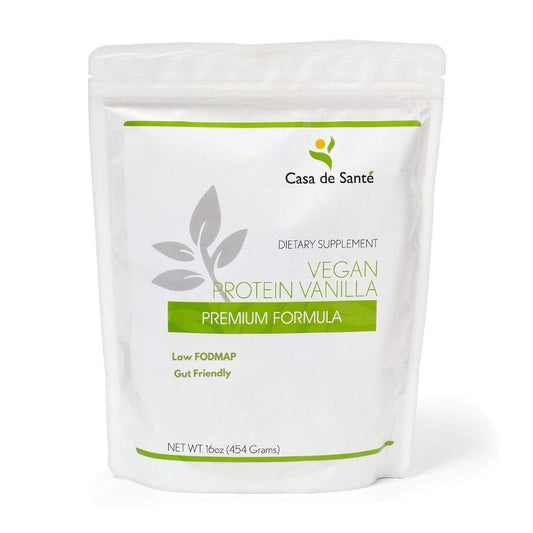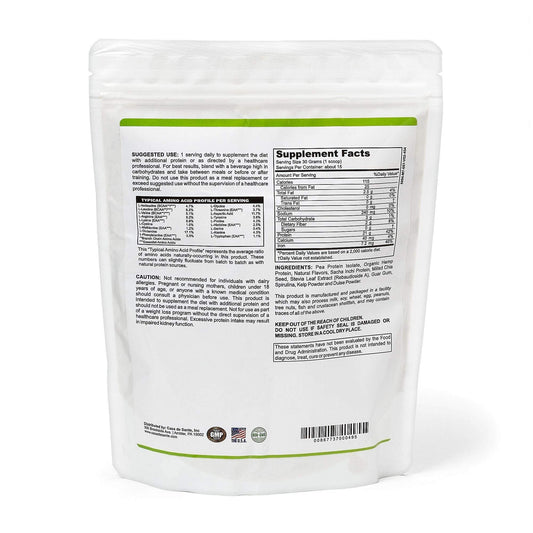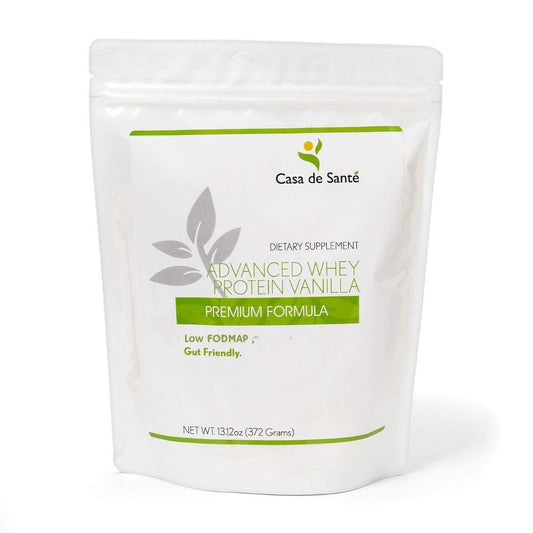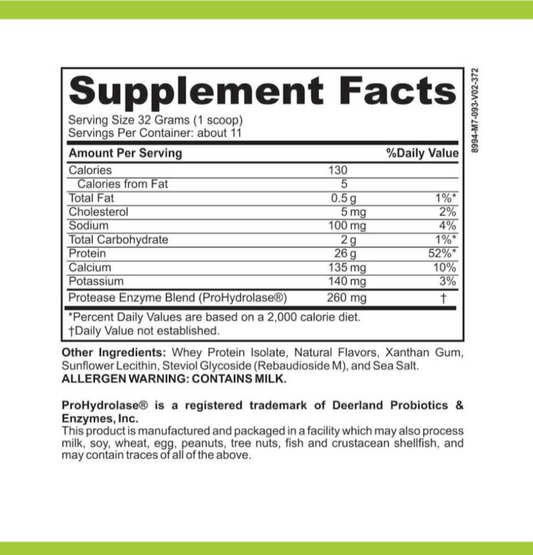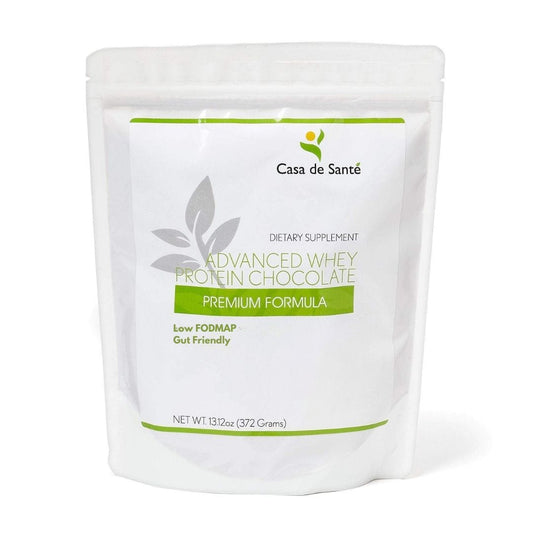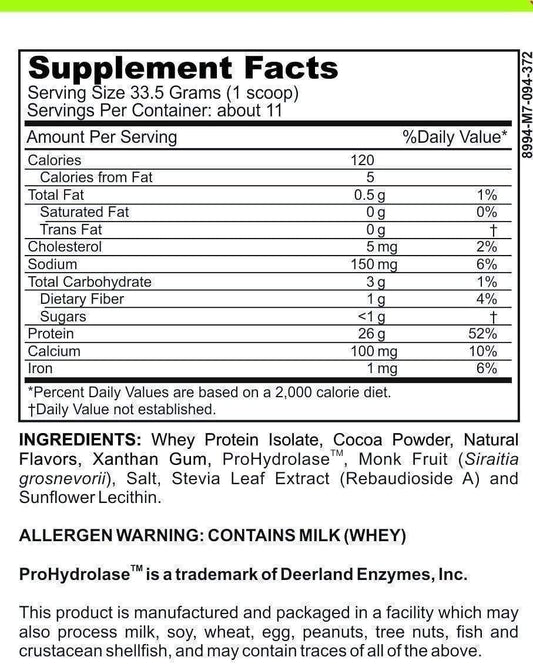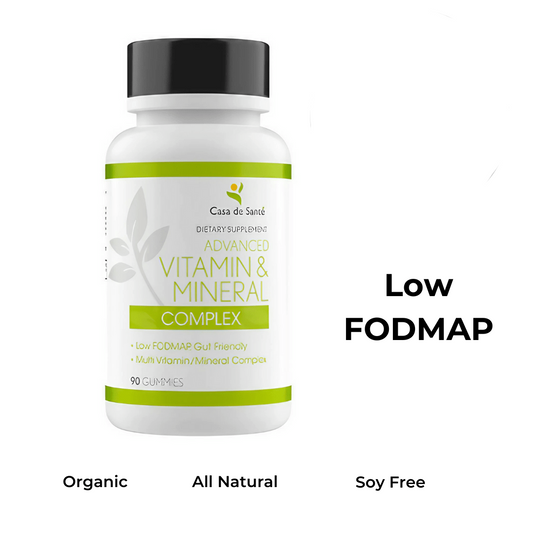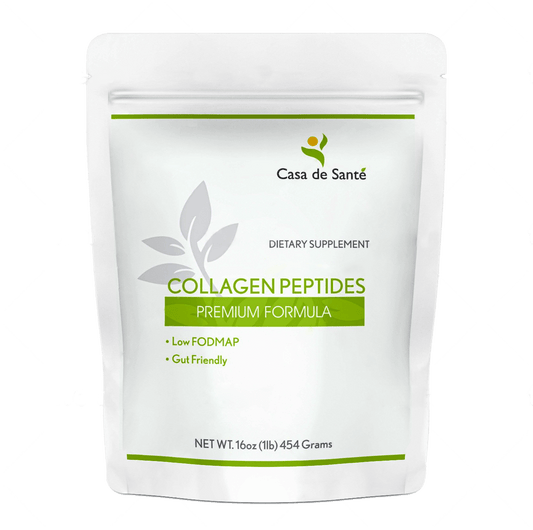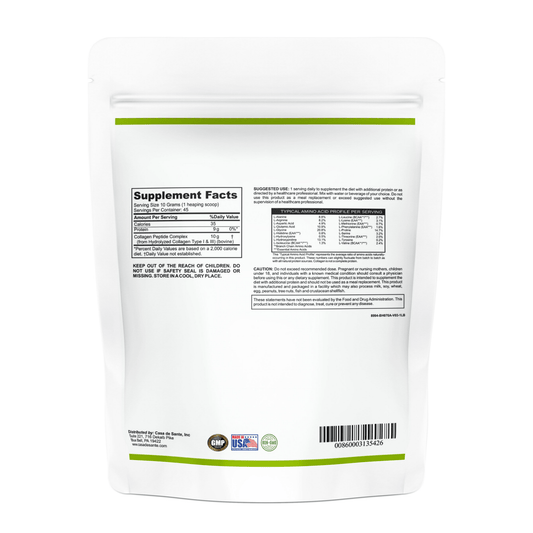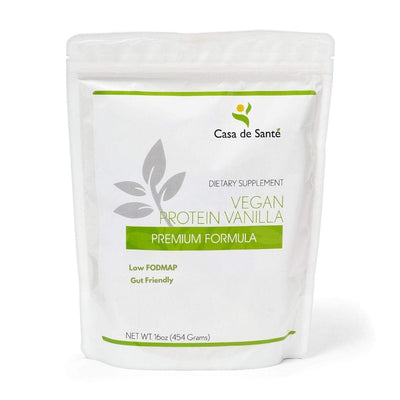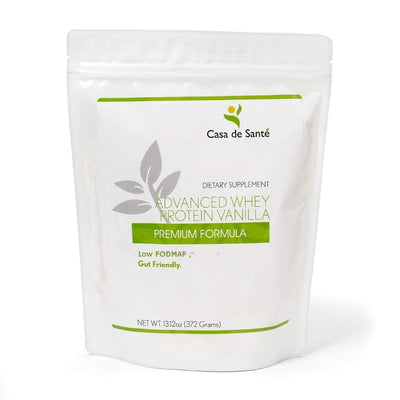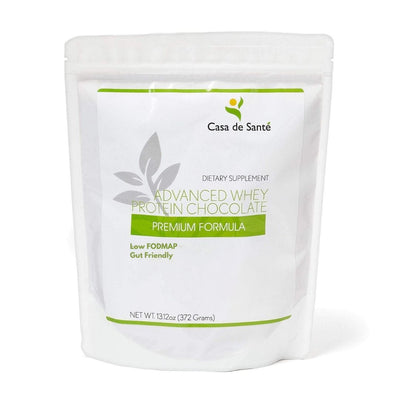FODMAP Friendly Smoothies: Easy and Delicious Recipes for Digestive Health
FODMAP Friendly Smoothies: Easy and Delicious Recipes for Digestive Health
FODMAP friendly smoothies can be a delicious and wholesome way to incorporate nutrients into your diet while avoiding triggers for digestive issues, particularly for those following a low FODMAP diet. If you're looking for smoothie inspiration that is gentle on your stomach, you're in the right place. Low FODMAP smoothies use fruits and vegetables classified as low FODMAP, being mindful of FODMAP stacking to ensure optimal digestive comfort.
A low FODMAP diet focuses on reducing fermentable short-chain carbohydrates, otherwise known as FODMAPs (Fermentable Oligosaccharides, Disaccharides, Monosaccharides, and Polyols). These carbohydrates can cause common digestive symptoms such as bloating, gas, and abdominal pain, especially in individuals with Irritable Bowel Syndrome (IBS). By experimenting with different low FODMAP ingredients, you can create satisfying and nourishing smoothies tailored to your body's unique needs and preferences.
Understanding FODMAP Friendly Smoothies
When it comes to maintaining a healthy diet while dealing with a sensitive digestive system, low FODMAP smoothies can be a game changer. These smoothies incorporate fruits, vegetables, and other ingredients that are low in fermentable oligosaccharides, disaccharides, monosaccharides, and polyols (FODMAPs), making them suitable for individuals who follow a low FODMAP diet to manage irritable bowel syndrome (IBS) or other digestive issues.
The key to crafting a delicious and nutritious low FODMAP smoothie is using ingredients that have been tested and verified to be low FODMAP. Some popular choices include:
- Unripe bananas
- Strawberries
- Blueberries
- Spinach
- Almond or macadamia milk
- Lactose-free yogurt
When making your smoothie, keep in mind that even low FODMAP fruits and vegetables can become an issue if consumed in large quantities. To prevent increasing the total FODMAP load, be mindful of portion sizes and avoid combining too many high-FODMAP fruits or low-FODMAP fruits in a single smoothie.
Apart from fruits and vegetables, you can enhance the taste and nutritional value of your smoothie by adding a variety of low FODMAP-friendly ingredients. Some examples include:
- Chia seeds
- Rice malt syrup
- Ginger
- Lemon
- Almond butter
By incorporating these ingredients, you can create a wide range of low FODMAP smoothie recipes, such as a refreshing blueberry banana nut smoothie or a zesty citrus ginger green juice. As you explore new recipes and flavor combinations, you'll find that low FODMAP smoothies are not only delicious but also contribute to better digestive health.
Importance of FODMAP for IBS Management
Irritable bowel syndrome (IBS) affects millions of people worldwide and is one of the most prevalent gastrointestinal conditions. Many IBS patients associate their gastrointestinal symptoms with food consumption, which makes dietary changes a crucial factor in managing this condition. A low FODMAP diet is an effective way to help alleviate symptoms and improve the quality of life for individuals with IBS.
A diet low in FODMAPs (fermentable oligosaccharides, disaccharides, monosaccharides, and polyols) is beneficial for IBS sufferers as it helps reduce bloating, gas, and general discomfort. FODMAPs are a group of short-chain carbohydrates that may be difficult for the small intestine to digest, leading to fermentation in the gut and producing excess gas.
Incorporating FODMAP-friendly smoothies into your diet can be a great way to enjoy nutritious and refreshing beverages while keeping IBS symptoms at bay. To create an ideal smoothie, it's essential to use low FODMAP fruits, vegetables, and other ingredients. Additionally, it's crucial to consider FODMAP stacking, which is the mixing of various low FODMAP foods in one meal or drink that, when combined, could lead to higher FODMAP levels and trigger IBS symptoms.
Fiber is also essential when creating smoothie recipes, as it can help promote regular bowel movements and alleviate constipation. However, it's vital to be cautious with the types of fiber included in your smoothie, as some high-fiber foods, particularly those high in insoluble fiber, can worsen IBS symptoms like bloating and gas.
In conclusion, a low FODMAP diet plays a significant role in managing IBS symptoms and improving overall gut health. By carefully selecting low FODMAP ingredients and being mindful of FODMAP stacking, you can enjoy delicious and nutritious smoothies that support your IBS management efforts. So, go ahead and create your own FODMAP-friendly smoothies to enjoy the benefits of a healthy and balanced diet without sacrificing flavor and variety.
Elements of a Balanced FODMAP Smoothie
When creating a FODMAP-friendly smoothie, it's important to carefully select ingredients that will not only provide a delicious taste, but also support a balanced nutrient intake. To achieve this balance, aim to include a combination of the following elements:
Fruits and Vegetables: Choose low-FODMAP fruits and vegetables that are easy on your digestive system. Some ideal options include strawberries, blueberries, raspberries, kiwi, lemon, honeydew, kale, spinach, and baby spinach. Be mindful of portion sizes, as mixing too many fruits and vegetables can lead to FODMAP stacking, causing digestive discomfort.
Protein: Incorporate sources of protein to help keep you full and provide energy throughout the day. Protein-rich ingredients that work well in low-FODMAP smoothies are protein powders (ensure it's lactose-free and gluten-free), almond milk, peanut butter, and chia seeds.
Healthy Fats: Adding healthy fats like avocado or coconut milk not only contribute to a creamy texture, but also provide essential nutrients and promote satiety. Keep an eye on the portion sizes, as a little goes a long way, and excessive amounts may lead to gastric distress.
Low-FODMAP Sweeteners: Enhance the taste of your smoothie with natural, low-FODMAP sweeteners such as a small amount of honey or pure maple syrup. Alternatively, you can rely on the natural sweetness of fruits like berries or kiwi.
Extras: Get creative with your smoothie by adding some extra flavor boosts that also support digestion. Add a pinch of ginger for a zesty kick, a spoonful of cocoa powder for a chocolaty taste, or a squeeze of lemon for a refreshing citrus burst.
Below is a versatile, low-FODMAP smoothie recipe that combines many of these elements for a delicious and balanced beverage:
- 1/2 cup lactose-free yogurt or almond milk
- 1/2 cup water
- 1/2 cup strawberries, blueberries, or raspberries (choose one or a combination)
- 1/2 medium banana (ripe and green-tipped for a low-FODMAP option)
- 1 tbsp peanut butter
- 2 tbsp oats
- A handful of baby spinach or kale
- 1 tbsp chia seeds
- Optional: 1/2 tsp grated ginger or a squeeze of lemon
Blend all ingredients together, and enjoy your balanced, FODMAP-friendly smoothie!
FODMAP Friendly Fruits and Vegetables
When creating a delicious and healthy FODMAP friendly smoothie, it's important to choose fruits and vegetables that are low in FODMAPs. Some of the best low-FODMAP fruits to include in your smoothies are:
- Pineapple: Not only does it add a tropical twist to your drink, but it's also rich in vitamin C, an essential nutrient for a strong immune system and healthy skin.
- Blueberries: These little berries pack a nutritional punch with their high content of antioxidants and fibre, helping to support digestion and overall health.
- Kiwi: Another excellent source of vitamin C, kiwi is a tasty and nutritious addition to any smoothie recipe.
- Lemon: Adding a splash of lemon juice can offer a refreshing zesty flavor to your drink and also provides vitamin C and other beneficial nutrients.
In addition to fruits, you can also include a variety of low-FODMAP vegetables in your smoothies for added nutrients and fibre. Some great options are:
- Baby spinach: This leafy green is a fantastic source of vitamins A, C, and K, along with essential minerals like iron and calcium. Plus, it adds a subtle and pleasant flavor that blends well with other ingredients.
- Ginger: Known for its soothing effect on the digestive system, ginger adds a unique and delicious flavor to your smoothie while providing some potential health benefits.
- Carrots: These crunchy vegetables are low in FODMAPs and an excellent source of vitamin A, which supports eye health and a strong immune system.
When making your low-FODMAP smoothie, consider natural sweeteners like maple syrup or stevia if extra sweetness is desired. These options are gentle on your gut and complement the flavors of the fruits and vegetables you've chosen.
Remember, variety is key to maintaining a balanced diet, even on a low-FODMAP regimen. With these fruit and vegetable suggestions, you'll be able to create delicious and nutrient-packed smoothies that fit into your FODMAP friendly diet plan.
Benefits of Including Proteins in your Smoothie
Proteins are essential macronutrients that play a vital role in numerous processes within your body. When you add protein to your smoothie, it not only helps increase satiety levels, but also supports muscle repair, maintenance, and overall health. Choosing an appropriate source of protein is crucial, especially for those following a low FODMAP diet.
Incorporating protein powder into your smoothie is a convenient way to boost its protein content. Whey protein, derived from milk, is a popular choice for its high-quality amino acid profile and ease of digestibility. However, if you're on a low FODMAP diet or lactose intolerant, opt for a whey protein isolate instead of a concentrate, as isolates have had most of the lactose removed.
Egg white protein powder is another excellent choice, particularly for those avoiding dairy. It's rich in essential amino acids and low in FODMAPs, making it suitable for people with IBS or other digestive issues. Be sure to choose a reputable brand with minimal additives to ensure the product aligns with your dietary restrictions.
In addition to being sources of protein, some of these protein powders also provide essential nutrients such as calcium, iron, and vitamin K. Calcium is vital for maintaining strong bones and teeth, while iron supports numerous metabolic processes, including oxygen transport and energy production. Vitamin K plays a key role in blood coagulation and bone metabolism.
If you prefer natural sources of protein, consider adding low FODMAP nuts, seeds, or even firm tofu to your smoothie. They not only boost the protein content but also contribute healthy fats, fiber, and other nutrients. Keep in mind, however, that some nuts and seeds may be higher in FODMAPs, so choose with caution and pay attention to serving sizes.
In summary, including proteins in your smoothie can have numerous benefits, from enhancing satiety and promoting muscle growth to providing essential nutrients. Be selective about your protein sources, and opt for low FODMAP options like whey protein isolate, egg white protein powder, or specific nuts and seeds to ensure digestive comfort.
Enhancing the Creaminess and Flavor
Creating a delicious and satisfying low FODMAP smoothie is all about balancing flavors and textures. Here are some fantastic ingredients to enhance the creaminess and flavor of your smoothies, without causing digestive distress.
Bananas: A tried and true smoothie staple, bananas not only add natural sweetness but also a smooth consistency to your drink. To avoid excessive FODMAPs, limit yourself to half of a ripe banana per serving.
Almond milk: A popular choice for those avoiding lactose, almond milk blends well with many different smoothie ingredients. Its subtle nuttiness enhances the overall flavor while also providing a thinner consistency compared to dairy milk.
Cinnamon: Cinnamon is a versatile spice that works well with various fruits, vegetables, and proteins. Just a pinch adds warmth and depth to your smoothie.
Cocoa powder: For a touch of indulgence, consider adding a teaspoon of unsweetened cocoa powder to your smoothie. It pairs especially well with bananas and almond milk for a delightful chocolaty treat.
Coconut milk: The natural sweetness, rich flavor, and luxurious texture of coconut milk make it a fantastic choice for low FODMAP smoothies. Opt for canned coconut milk to maintain a creamy consistency, or choose a low-fat version if you prefer a thinner texture.
Avocado: This nutrient-dense superfood brings a buttery richness to smoothies without sacrificing on taste. Avocado also meshes well with both sweet and savory recipes, and it's an excellent source of healthy fats.
Almond Vanilla Protein Delight: Adding a scoop of almond-flavored protein powder not only boosts the protein content of your smoothie but also lends a delicious hint of vanilla that complements many different fruit and veggie combinations.
Remember, the key to the perfect low FODMAP smoothie is experimentation. Feel free to mix and match these creamy, flavor-enhancing options to discover your favorite texture and taste combination. Happy blending!
Sweetening your Smoothie Naturally
When you're creating a low FODMAP friendly smoothie, you may want to sweeten it a bit to enhance the flavors. Fortunately, there are several natural sweeteners that you can use to achieve a delicious and nutritious smoothie without aggravating your IBS symptoms.
Sugar is a simple and widely available sweetener that you can use in moderation to sweeten your smoothie. While sugar is low in FODMAPs, it's important to remember that it's still a source of empty calories and can negatively affect your overall health if consumed in excess. Add a small amount of sugar to your smoothie if you're looking for a subtle sweetness.
Honey is a natural sweetener that not only adds sweetness to your smoothie but also imparts a unique flavor. However, since honey is high in fructose, it's not the best option for those following a strict low FODMAP diet. You can still use a small amount of honey occasionally, but be cautious about the quantity and monitor your reaction.
Maple syrup is another natural sweetener that can be used in a low FODMAP smoothie. Rich in antioxidants and minerals, maple syrup offers a distinct flavor that can enhance a variety of fruit and vegetable-based smoothies. Opt for pure maple syrup and use it sparingly, as higher amounts can increase the FODMAP content.
In addition to these sweeteners, there are other ways to naturally sweeten your smoothie without adding sugars or aggravating your IBS. Some options include:
- Cinnamon: This fragrant spice adds sweetness and warmth to your smoothie while also providing potential antioxidant benefits.
- Vanilla extract: Just a few drops of vanilla extract can add a hint of sweetness and depth to your low FODMAP smoothie.
- Ripe fruit: Choosing ripe and naturally sweet fruits, such as bananas and strawberries, can provide enough sweetness to your smoothie without the need for added sugars.
Remember, when making your low FODMAP smoothie, it's essential to pay attention to the ingredients and their potential effect on your IBS symptoms. Experiment with different sweeteners and combinations until you find a smoothie that works best for your palate and your digestive system.
Understanding the FODMAP Content of Ingredients
When creating FODMAP-friendly smoothies, it's important to understand the FODMAP content of various ingredients. FODMAPs are short-chain carbohydrates that can be poorly absorbed by your gut, causing symptoms in individuals with Irritable Bowel Syndrome (IBS). They are classified into four groups: lactose, disaccharides, monosaccharides, and polyols.
Lactose is a naturally occurring sugar found in milk and dairy products. It is considered a disaccharide, which means it is made up of two sugar molecules. If you are lactose intolerant or sensitive to lactose, look for dairy-free alternatives like almond milk, lactose-free milk, or coconut milk.
Disaccharides are carbohydrates made up of two sugar molecules. Examples of disaccharides include lactose and sucrose. Using low-FODMAP sweeteners, such as maple syrup or stevia, can help minimize the amount of disaccharides in your smoothie.
Monosaccharides are single sugar molecules, such as fructose and glucose. Fruits high in fructose, like apples, pears, and mangoes, are high-FODMAP, while fruits low in fructose, like grapes, oranges, and pineapple, are low-FODMAP. Be mindful of the fruit choices when preparing your smoothie.
Polyols are sugar alcohols found in some fruits and vegetables, as well as artificial sweeteners. Common polyols include sorbitol, xylitol, and maltitol. To avoid polyols, make use of natural sweeteners and low-FODMAP fruits in your smoothie.
Keep in mind the concept of FODMAP stacking. Even low-FODMAP ingredients can cause symptoms if consumed in large enough quantities. Stick to recommended portion sizes and try to include only low-FODMAP vegetables and fruits in your smoothie. Some ingredients to consider include:
- Fruits: strawberries, blueberries, raspberries, kiwi, or pineapple
- Vegetables: spinach, kale, or cucumber
- Dairy alternatives: almond milk, lactose-free milk, or coconut milk
- Natural sweeteners: maple syrup or stevia
By understanding the FODMAP content of ingredients and choosing appropriate alternatives, you can create delicious and gut-friendly smoothies to enjoy.
Smoothie Recipes for an On-the-Go Breakfast
Starting your day with a nutritious and delicious low FODMAP smoothie is not only quick and easy, but it's also perfect for those busy mornings. Below are a few recipes that will help you enjoy a satisfying breakfast on-the-go.
1. Honeydew Melon and Kiwi Smoothie:
- 1 cup diced honeydew melon (low FODMAP)
- 1 kiwi, peeled and diced (low FODMAP)
- 1 tablespoon lemon juice
- 1 tablespoon sugar (optional)
- 1/2 cup milk or yogurt (lactose-free if needed)
- A few ice cubes
In a blender, combine the honeydew melon, kiwi, lemon juice, sugar, milk or yogurt, and ice cubes. Blend until smooth and creamy. Pour into a travel mug, and you're ready to go!
2. Wild Blueberry Chia Smoothie:
- 1 cup frozen wild blueberries (low FODMAP)
- 1 tablespoon chia seeds
- 1 cup almond milk
- 1/2 medium banana (ripe but not overripe)
- A few ice cubes
Add the frozen blueberries, chia seeds, almond milk, banana, and ice cubes to your blender. Blend until the desired consistency is reached. Pour into your favorite travel mug and enjoy a burst of nutrition during your morning commute.
3. Peanut Butter Banana Smoothie:
- 1 medium banana (ripe but not overripe)
- 2 tablespoons peanut butter (natural, no added sugar)
- 1 cup lactose-free milk or almond milk
- 1 tablespoon cocoa powder (optional)
- A few ice cubes
Place the banana, peanut butter, milk, cocoa powder (if using), and ice cubes in your blender. Blend until smooth and creamy. This protein-packed smoothie is perfect for a post-workout breakfast on-the-go.
These easy smoothie recipes are not only low in FODMAPs, but they're also packed with nutrients that will keep you energized throughout your morning. Just grab your blender, and in a few minutes, you'll have a delicious and satisfying on-the-go breakfast. Enjoy!
The Role of a Nutritionist in a Low FODMAP Diet
When embarking on a low FODMAP diet, it's essential to consult with a nutritionist. A qualified professional can guide you through the different phases of the diet and ensure that you maintain a nutritionally adequate and balanced eating plan.
A nutritionist will initially help you with the restriction phase, where you'll need to limit or eliminate high FODMAP foods for two to six weeks. They will provide you with a comprehensive list of foods to avoid and suggest suitable alternatives. This phase allows your body to experience a reduction in IBS symptoms and sets the groundwork for identifying individual triggers.
After the restriction phase, a nutritionist will support you in the reintroduction phase. You will gradually reintroduce high FODMAP foods, monitoring your body's response to identify which specific items cause symptoms. This step is crucial in developing a personalized diet, tailored to managing your IBS symptoms effectively.
In addition to guiding you through the steps of a low FODMAP diet, a nutritionist can also provide:
- Nutritional adjustments when inadequate intake of nutrients is identified.
- Personalized meal planning, taking into consideration your preferences, lifestyle, and any dietary restrictions.
- Emotional support and encouragement as you navigate the challenging process of identifying trigger foods.
Consulting a nutritionist when embarking on a low FODMAP diet is essential to ensure the best possible outcome. They will provide invaluable expertise in helping you create a balanced and personalized eating plan that can manage your IBS symptoms effectively and safely.

